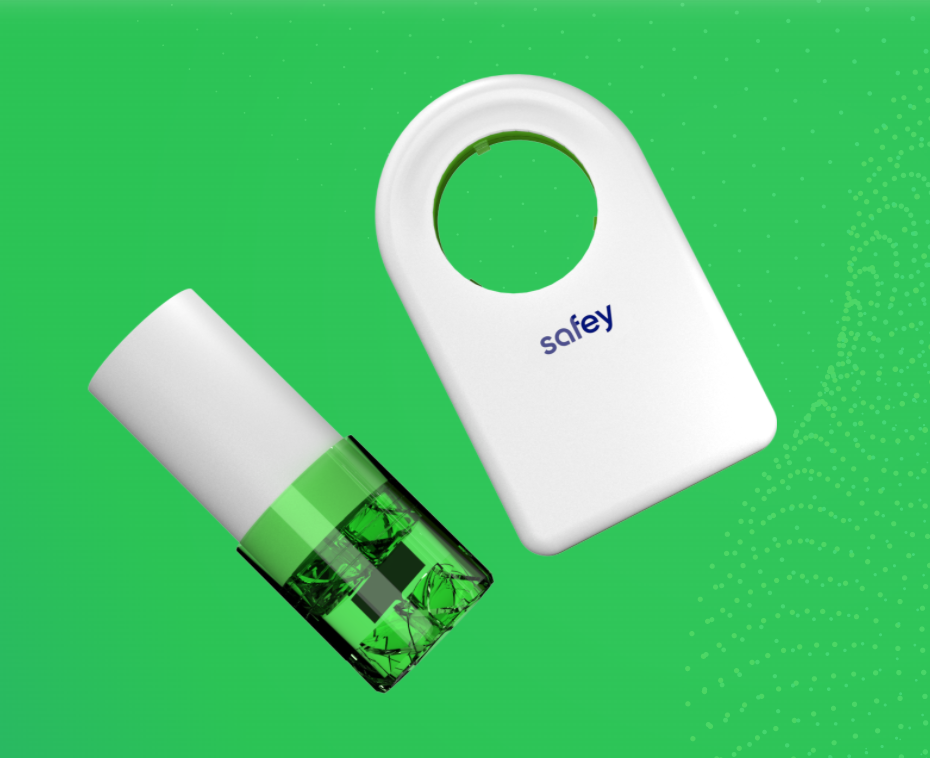
5 Ways To Improve Adherence in Asthma and COPD
Safey Medical Devices offers a pocket spirometer that is a handy and clever solution to improve adherence in Asthma and COPD. Contact us to learn more!
The below content is derived from research done using sources available on the internet. Safey Medical Devices Inc and its subsidiaries do not take any responsibility for the accuracy of the content. No medical decision should be taken on the basis of below content without consulting with your Medical Practitioner.
Non-adherence when it comes to asthma treatment is becoming more and more common. Not only does it results in increased morbidity, but it is also related to an increase in treatment costs. It’s important to learn the barriers to adherence and understand ways in which to help improve it.
According to The World Health Organization (WHO), adherence is defined as:
“the extent to which a person’s behavior corresponds with agreed recommendations from a health care provider.”
And when it comes to Asthma and COPD?
Nonadherence to prescribed treatment is an important cause of “difficult asthma.”
Certain studies have shown rates of nonadherence amongst asthmatic patients to range between 30% and 70%.
There are many different factors associated with this figure. Nonadherence in asthma and COPD treatment results in increased mortality and morbidity.
Not to mention that it is associated with increasing treatment costs.
Improving patient adherence is a tricky topic. With certain studies showing that up to 55% of patients with asthma still experience frequent exposure to nicotine, despite intensive intervention,
it’s not difficult to see why.
↢ Identification Of Adherence VS Treatment-Resistant Asthma & COPD ↣
Recent studies have shown a high prevalence of nonadherence with anti-inflammatory medication in patients referred for specialist assessment with difficult to-control asthma.
As well as poor asthma outcome and increased healthcare cost, failure to detect nonadherence makes the identification of true treatment resistant or refractory asthma and COPD a challenging task.
So, what can be done to help improve these statistics and increase patient adherence to asthma treatment and therapy?
⇨ Behavioural Strategies ⇦
To look at improving patient behaviour when it comes to their own asthma and COPD condition, it’s crucial to look at adherence barriers.
In a 2015 study conducted by the European Respiratory Journal (ERJ), there were several barriers noted when it came to patient adherence in asthma medication.
Ranging from a patient’s lack of belief that their condition was in fact chronic, or associated with an allergy, to 23% of patient nonadherence related to anger about their own condition. Dissatisfaction in health care professionals came in at 34%, and a lack of social support, and drug availability was reported in 64% of patients.
The complexity of the therapy was mentioned by a high number of patients, and a fear of side effects of drugs was recorded in people with a positive correlation in their dosage regimen.
It may not come as a surprise that errors in inhalation technique were also reported at a figure of 50% of all people involved in this study.
With such a varied patient response when it comes to medication and treatment, it highlights how individual and personal adherence is, in asthma and COPD
It’s therefore crucial to look at teaching and reinforcing behavioural skills such as…
Inhaler Use
Self-monitoring
Explanation of medication and it’s use
Environmental control
Tailoring Therapy Strategy
…when it comes to the improvement of adherence in asthma and COPD treatment.
Tailoring each therapy to the patient is a strategy that is sometimes overlooked by health care providers.
When it comes to the management of lung conditions such as asthma and COPD, tailoring refers to fitting the exact prescribed regimen and intervention strategies to specific characteristics of the patient.
It is another effective behavioural method used to improve adherence
When it comes to developing tailored treatment recommendations as a way to target the improvement of asthma and COPD outcomes, other studies also highlight that many clinicians do not routinely assess treatment adherence during patient visits, instead of relying on clinical judgment to assess this.
⇨ Education ⇦
Asthma and COPD are both complex diseases, therefore requiring a certain amount of education and understanding by both the patient and their support system, such as their family and friends, in order to be managed in a successful way.
Knowledge of medication and treatment is vital, but when solely utilized, it is not enough to ensure patient adherence. Several studies have shown the key role of effective communication between patients and health care providers when it comes to good patient adherence.
Education of the patient from the initial time of diagnosis to every single step of asthma and COPD care should be top of the medical list. And written instructions about the asthma regimen that are both culturally appropriate and adapted to suit the patient’s level of literacy should be taken into account upon every medication interaction with the patient.
From doctors, to asthma nurses and consultant, each healthcare professional and member of the medical team should be aware of their patient needs if they want successful adherence outcomes.
When it comes to elderly patients, one study showed that a huge factor in nonadherence was the cost of medication and the technique when it came to administering inhaled medication. For older patients, it is critical to show and then continue to show the correct information when it comes to taking medication.
Visual aids might also be useful instead of written information and directions alone. Based on a specific WHO Resource book on the subject of “Adherence to Long-Term Therapies”, the understanding and recall of information on how to take medication was shown to be significantly improved when medication-taking instructions were presented as lists rather than paragraphs and pictures or icons were used in combination with written medication instructions.
⇨ Self-Reporting ⇦
The ongoing maintenance of a patient’s lung condition is an important factor in adherence.
Self-management programmes, such as asthma actions plans should be utilized by both patient and healthcare professional as a way to enable a patient and his or her family to manage asthma efficiently and effectively over time.
Self-management programmes for adult and childhood asthma have been shown to reduce asthma morbidity and costs, and according to this study, may be useful in promoting and sustaining long-term adherence to therapy.
As a way to further aid in the completing of such self-reporting tools, doctors and asthma nurses can actively encourage adherence to the treatment plan and continue to jointly develop this plan by ongoing maintenance between the patient and the medical team. This includes discussion of said plan and the completion of this upon each health visit.
Download an adult asthma action plan from Asthma UK here.
⇨ Reminders and Reinforcement ⇦
In the event of unintentional adherence, the use of the use of aids like Dosette boxes, calendar packs and reminders have been shown to be helpful to asthma and COPD patients.
Studies have also shown that Awareness of monitoring devices and providing feedback to patients on monitoring results when it comes to their medication is also an important strategy and may improve adherence to treatment.
Reinforcement refers to any consequences that increase the probability of the behaviour being repeated. Dunbar suggested that a clinician’s time and attention to the patient might well be just about the most powerful available reinforcer of them all.
The length of time a patient spends with the clinician is positively related to adherence.
⇨ The Right Tools ⇦
A fairly new and incredibly innovative way of assisting with your asthma condition is to look into the use of helpful tools, such as a smart inhaler.
The Safey Health Smart Inhaler is a handy and clever solution of smart hardware mixed with software, as a way to make asthma care management as easy and effective as possible.
Connecting patients with their doctors and helping them to remember to utilize their treatments effectively and efficiently, and keep doctors in the loop with critical data, the smart inhaler is a great way to help with patient adherence.
It consists of remote monitoring and dosage control and makes it easier for doctors to spot when any symptoms are getting worse.
If the Safey Smart Inhaler sounds like something you want to get on board with, take a look at our website. For more detailed questions on how it can help with your condition, get in touch with us today to find out more.









